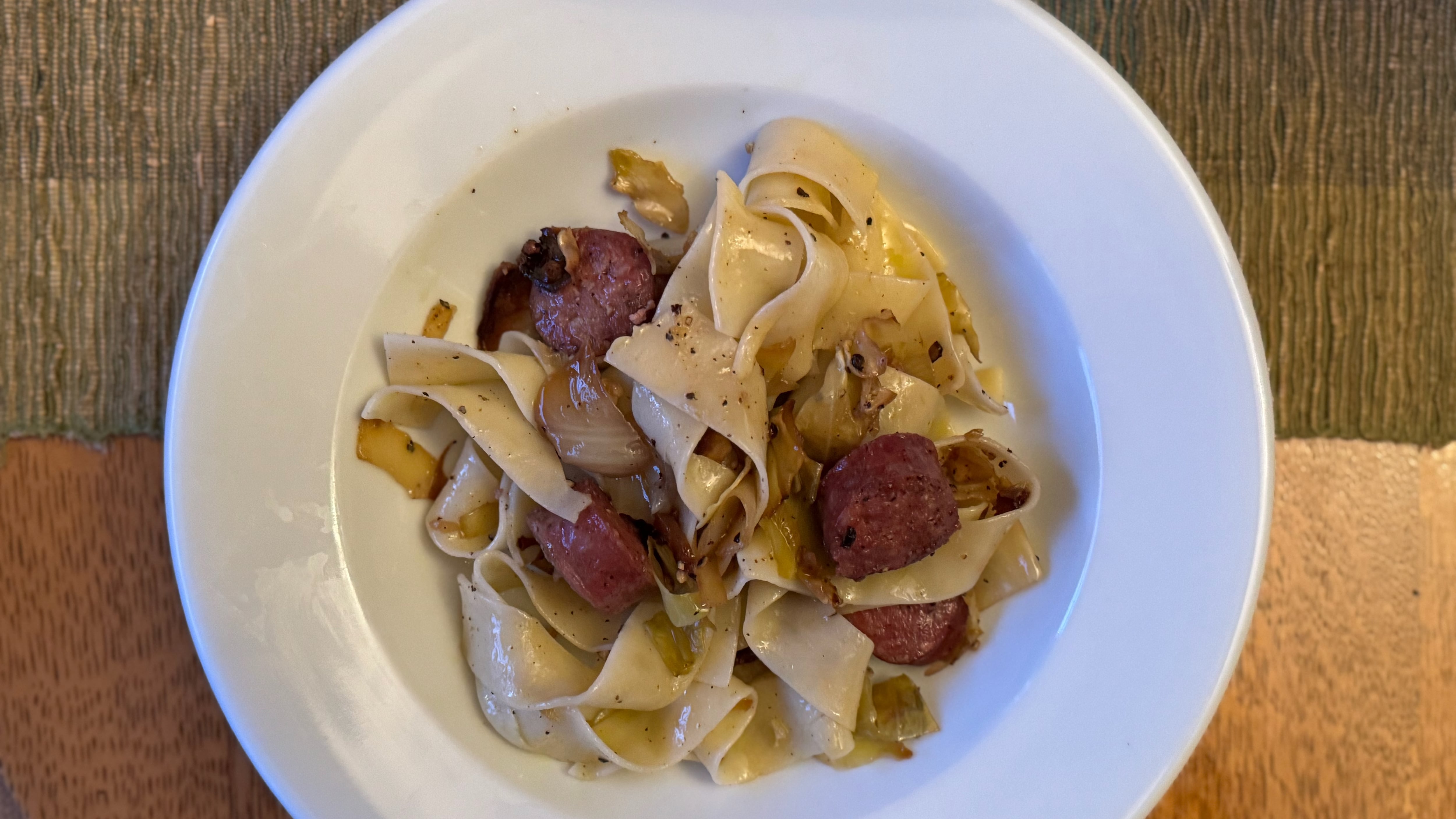Jim Dixon wrote about food for WW for more than 20 years, but these days most of his time is spent at his olive oil-focused specialty food business Wellspent Market. Jim’s always loved to eat, and he encourages his customers to cook by sending them recipes every week through his newsletter. We’re happy to have him back creating some special dishes just for WW readers.
If Portland had a Polish restaurant, you might find this comforting dish of onions, cabbage, and noodles on the menu. But while Polish Americans have long assumed haluski comes from their homeland, it’s really from the eastern and central European cultures farther south. It takes different forms depending on where you’re eating, from small dumplings made with grated potatoes in Hungary to a sheep cheese variation in Slovakia to Turkey’s bigger dumplings served with ground meat.
The domestic version skips the more labor-intensive dumplings in favor of wide noodles. While it often consists of just vegetables and noodles, haluski with bacon or smoked sausage or both isn’t uncommon. Most versions use butter, the more traditional cooking fat of haluski’s homeland, but I’ve combined the tasty pork fat that cooks out the sausage and bacon with my preference, olive oil (but feel free to throw in a little butter).
Instead of cooking the onion and cabbage together on the stovetop, I like to caramelize the cabbage in the oven. It’s an extra step but provides another layer of flavor. You can skip it, and you can leave out the pork products. The finished dish will taste a little different, but it’s still haluski.
Recipe
2-3 slices bacon, cut into bite-sized pieces
1-2 smoked sausages or kielbasa, cut into ¾ inch pieces
½ head green cabbage (about 1 lb), chopped
2 tablespoons extra virgin olive oil
1 onion, chopped
3 cloves garlic, chopped
Kosher-style sea salt and freshly ground black pepper, to taste
½ pound wide pasta such as pappardelle
Toss the chopped cabbage and olive oil in a skillet and bake it at 350 degrees until the cabbage is nicely browned, about 40 minutes. Leave the oven at 350, wipe out the skillet, and use it to bake the sausage and bacon together for about 20 minutes. Add the pork to the cabbage, but try to save most of the rendered fat.
Use a larger pan or Dutch oven to cook the onions in the pork fat with the salt and pepper over medium heat until very soft and beginning to brown, about 15 minutes. Add the garlic, cook for a minute, then add the cabbage and pork. Reduce the heat to low and let cook gently while you boil the noodles according to the directions on the package.
Drain the pasta, reserving about ½ cup of the cooking water. Add the noodles and pasta water to the cabbage and cook everything together for about 5 minutes. Serve hot.
